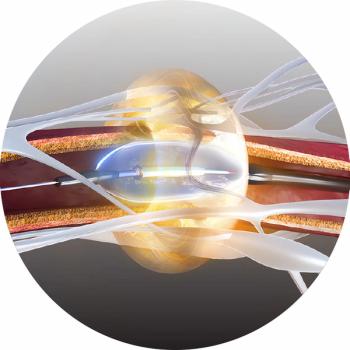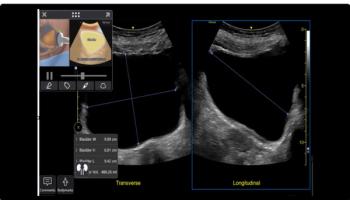
Ultrasound foretells stroke risk based on carotid plaque morphology
Results from a large study by Italian investigators suggest that ultrasound can predict the risk of stroke in mostly asymptomatic patients based on the assessment of carotid artery plaque morphology, not just stenosis degree. Sonographic surveillance of plaque evolution could boost stroke prevention.
Results from a large study by Italian investigators suggest that ultrasound can predict the risk of stroke in mostly asymptomatic patients based on the assessment of carotid artery plaque morphology, not just stenosis degree. Sonographic surveillance of plaque evolution could boost stroke prevention.
Researchers have previously defined the role of vascular risk factors, such as hypertension and diabetes, in the development of atherosclerosis. The factors that determine the vulnerability of plaque, however, remain controversial.
Physicians dealing with stroke and cardiovascular or cerebrovascular disease should give particular relevance not only to carotid degree of stenosis but also to plaque morphology using ultrasound, said principal investigator Dr. Edoardo Vicenzini of the department of neurological sciences at the University of Rome “La Sapienza.”
“Ultrasound, in the hands of experienced users, is a simple, reliable, low-cost, and diffuse methodology to characterize carotid stenosis,” Vicenzini told Diagnostic Imaging. “The identification of the ‘unstable’ plaque should indeed identify subgroups of patients at major stroke risk who should undergo a more careful, aggressive, and specific primary and secondary prevention strategy.”
Vicenzini and colleagues prospectively enrolled 1655 consecutive patients who underwent ultrasound-based assessments of carotid plaque morphologic characteristics, stenosis degree, and common carotid artery intima-media thickness (IMT). The investigators recorded demographic data, a history of symptomatic cerebrovascular disease, and the presence of vascular risk factors.
They found that hypertension and diabetes correlated with thicker IMTs and more severe, complex plaques. They also found two-thirds of patients with complex plaques were asymptomatic for cerebrovascular disease. Findings appeared in the September issue of the Journal of Ultrasound in Medicine (J Ultrasound Med 2008;27:1313-1319).
Hypertensive and diabetic patients bearing carotid stenosis that is not necessarily hemodynamically significant (>60%) but otherwise seemingly unstable on ultrasound should carefully consider therapy, according to Vicenzini. Signs of unstable plaque are heterogeneity with low echogenicity areas and irregular surface and ulcerations.
Aggressive preventive strategies, including the use of statins, with detailed and strict follow-up every five to six months could be helpful, he said.
“Physicians performing ultrasound and recognizing these features should then precisely identify and describe plaque morphology for further future follow-up investigations to detect texture progression and modifications,” he said.
For more information from the Diagnostic Imaging archives:
Newsletter
Stay at the forefront of radiology with the Diagnostic Imaging newsletter, delivering the latest news, clinical insights, and imaging advancements for today’s radiologists.
































